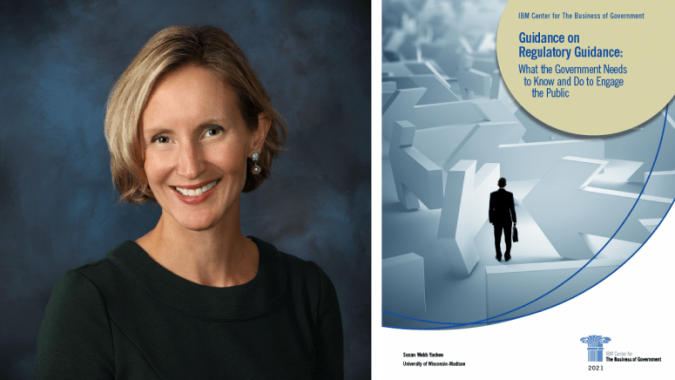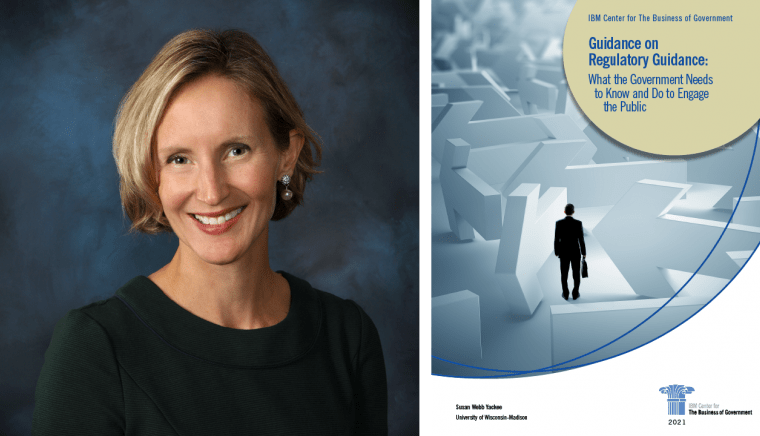
BY Ann Shaffer
MADISON – Few Americans understand the extent to which an obscure public-policy tool known as a guidance document affects their daily lives. Regularly issued by federal agencies, these documents explain how to comply with laws or regulations on everything from cosmetics to cybersecurity.
The U.S. Department of Education’s recent guidance document extending protections against discrimination based on sexual orientation or gender identity continued a long practice-employed by all agencies and politicians from both political parties-of using guidance documents to make major public-policy decisions. Yet most citizens have no idea how guidance documents are created, how to access them, or how to participate in their development. In fact, scholars don’t even know how many guidance documents federal agencies issue each year.
A new report by Susan Webb Yackee, director of the La Follette School of Public Affairs at the University of Wisconsin-Madison, provides a roadmap for improving the creation and management of guidance documents by fostering a more citizen-centric process.
Published by the IBM Center for the Business of Government, “Guidance on Regulatory Guidance: What the Biden Administration Needs to Know and Do to Engage the Public” identifies five key problems: (1) lack of a common definition of “guidance”; (2) no centralized repository to house guidance documents; (3) no archival record of past guidance; (4) lack of a public notification process for new or rescinded guidance; and (5) no systematic process for the public to participate during the creation of major guidance.
“Federal agencies can use guidance documents only to recommend action, but in practice they are often treated as binding, sometimes because people simply don’t understand how to challenge them, or because they don’t fully grasp the purpose of guidance documents,” Yackee says. “As a result, critics argue that guidance documents coerce compliance and result in regulatory overreach.”
This confusion was especially problematic during the pandemic, as the Centers for Disease Control and Prevention issued numerous guidance documents. One on reopening K-12 schools in February 2021 provided nonbinding policy recommendations for communities to safely deliver in-person instruction. Yet many state and local officials, as well as some teachers’ unions, treated the guidance as a binding standard, which may actually lessen the likelihood of schools reopening.
While federal agencies use guidance on high-profile policy topics, like transgender rights, most guidance documents are technical in nature, and their effects are concentrated on specific business areas or industries. At times, these entities recoil from the additional layers of regulation imposed by guidance; other times, businesses proactively request agencies to issue guidance to clarify agency practice.
Some government agencies work with stakeholders to create guidance documents, but it is often done in an ad-hoc and nontransparent way. “Guidance on Regulatory Guidance: What the Biden Administration Needs to Know and Do to Engage the Public” recommends several reforms, including creating a governmentwide website where the public can find all guidance documents currently in effect. Yackee’s recommendations would modernize the issuance of guidance documents while retaining their nimbleness and timeliness.
“The government can implement my suggestions via executive order or memoranda, or through new congressional legislation,” she says.
Yackee is hopeful that this vital public-policy tool can be reformed.
“Politicians from both sides of the aisle have expressed concern about the status quo,” she says. “And I think a broad spectrum of Americans shares the goals of fostering greater transparency and public engagement. These types of common-sense reforms are hard to argue against.”
—UWMadison_news_office








